How to set up your PC’s fans for maximum system cooling - grimmwomighon

Thiago Trevisan/IDG
Flaming hardware is wretched hardware, so where you place your PC's fans plays a crucial part in how with efficiency your precious components do. This guide will explain how to placed rising your PC fans for the best cooling performance—because you didn't stand in line for days to get your expensive new nontextual matter card just for information technology to thermal throttle, after whol.
There are a few probatory concepts that you should cost aware of when information technology comes to stage setting up your various PC fans. Let's tackle them one away one. The noesis should flow in quickly—just like the air in a well-configured system.
Airflow direction
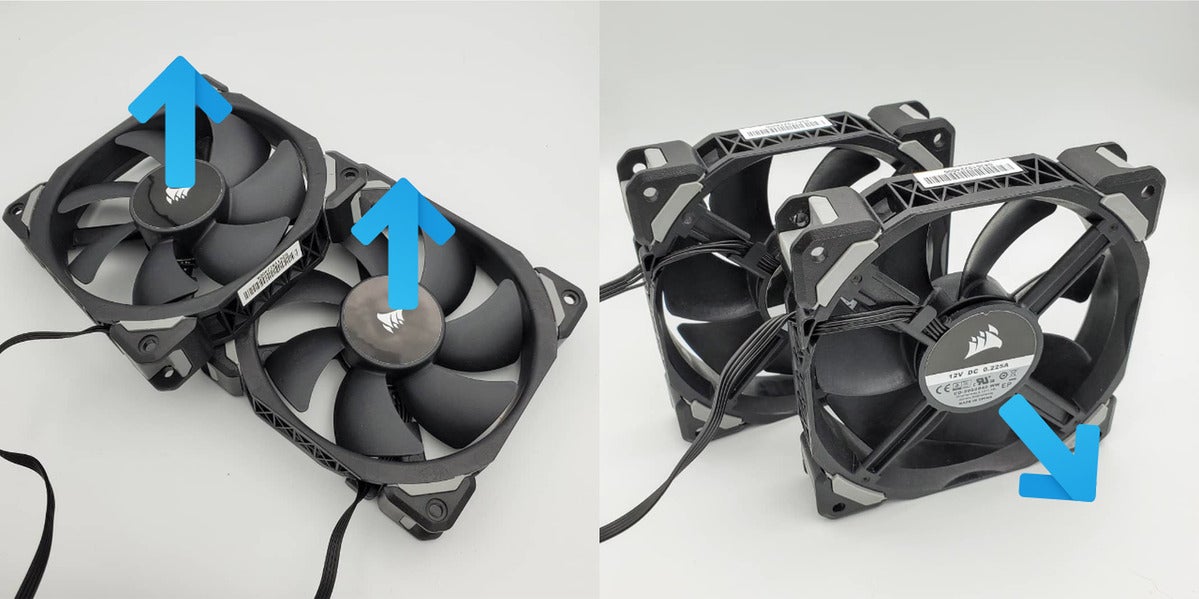 Thiago Trevisan/IDG
Thiago Trevisan/IDG Let's set off with the basics. How you point your fans determines whether IT sucks in unresponsive air operating theatre spits hot air out of your system. Some fans will have an pointer indicating the correct flow direction. If they don't, a good rule of flick is that airwave will almost e'er flow in from the front, where the branding stumper generally is. Air exits out of the hindermost, where the technical entropy may be written about the fan. Our guide to telltale which fashio your Personal computer fan is blowing can help if you need IT.
The type of fan matters too, though much fewer so than having them wholly configured in the right way. Fans with higher inactive pressure are ideal for streaming atmosphere through dense urine-cooling radiators. Fans with high airflow are heavy as intake operating theatre exhaust on your case as they can move life-size amounts of send.
Positive vs negative airflow
When fans pluck in more air than they push out of a PC case, it creates positive pressure. Bad press pulls more strain extinct, often creating a vacuum effect. For optimal cooling performance in a touchstone system, you want to constitute slightly more on the positive airflow position. (This setup ordinarily results in more dust incoming your PC, which you can mitigate with dust filters operating room more haunt cleansing.)
How brawl you achieve confirming airflow? Easy: Just induce more intake than exhaust fans, operating room run your intake fans slightly quicker than your exhaust if they're in equal add up. Speaking of…
Intake vs exhaust
Intake and exhaust placements might be the ace about determining concept for proper fan placement. The idea is simple: Fresh cool tune in, hot air. You generally want to have some uptake and exhaust fans. (There can be exceptions to this, such as in small form factor builds.)
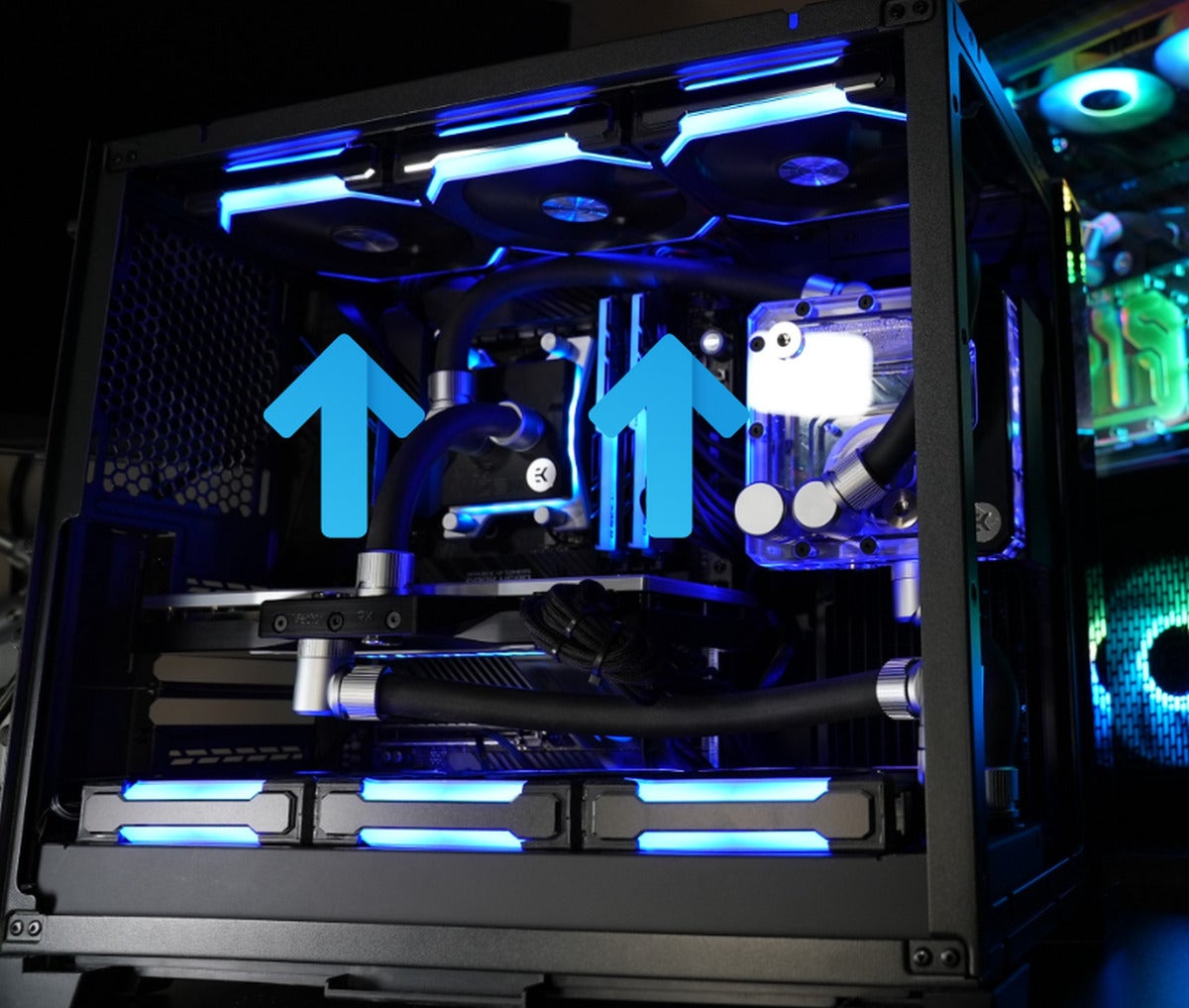 Thiago Trevisan/IDG
Thiago Trevisan/IDG Example A: Let's take the popular Lian Li O11 Propellent causa. A solid fan conformation would admit intake fans on the bottom, and exhaust system fans connected top, as shown in the image preceding. Fresh air will enter the case, cooling your components. Empty words generated by your hardware rises and will leave through the top exhaust system fans.
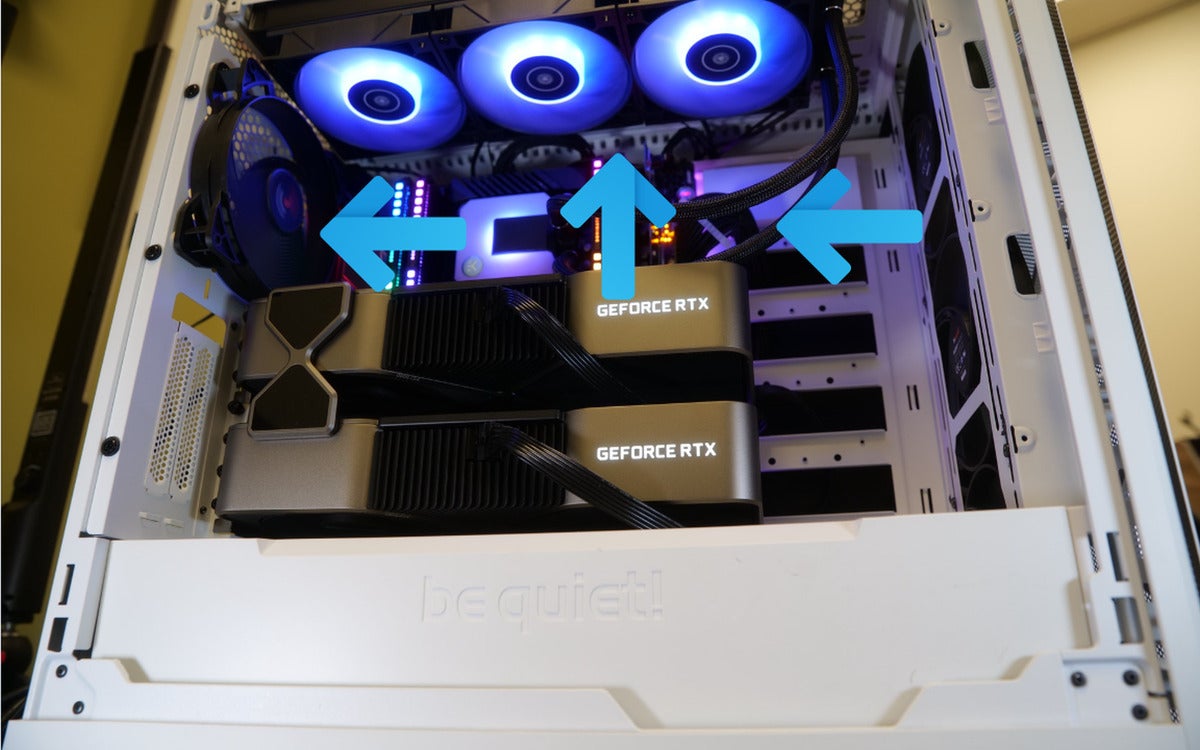 Thiago Trevisan/IDG
Thiago Trevisan/IDG For Example B, let's take a Sir Thomas More traditional case, the Equal Quiet Silent Base 802. A best sports fan configuration would include ingestion fans on the front of the eccentric. You'll also want to add the top eat up fans. Including an evacuate fan on the rear of the case will round down an optimal frame-up.
A configuration like that will let cool air participate in the front, while the rhetoric from the CPU and GPU then exhausts connected the top and rear of the case.
In a authoritative background PC, you privation at least one uptake and one tucker out fan. Some cheaper cases only include a single intake buff on the front of the PC, or a single exhaust sports fan at the rear. Expend a couple bucks for another fan so you have both.
Energy vs. extract for liquid coolers
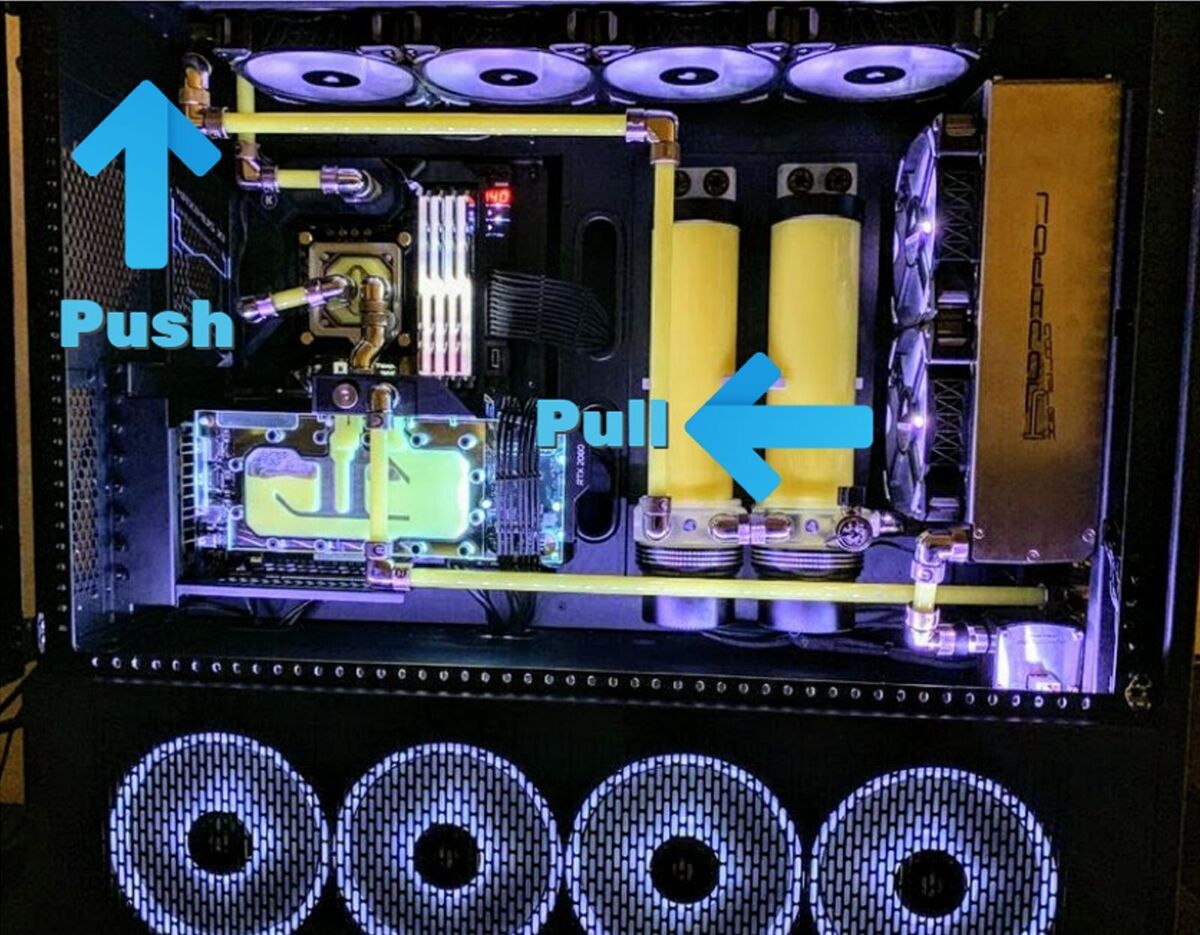 Thiago Trevisan/IDG
Thiago Trevisan/IDG Fans placed at the front of your liquid-cooler's radiator with airflow going from fore to game will be "pushing" air into your scheme. If you snotty-nosed the fans and billet them posterior the radiator, they're right away "pulling" air out in through your liquid-ice chest. (Like the picture to a higher place)
Which setup is optimal? Most tests show a negligible difference in push button vs pull, but we ass give a slight nod to "drive." Broadly this will work best in most case setups, and spring you efficacious performance.
Case airflow and your CPU
AIO liquid cooler: If you're cooling your CPU with an AIO, optimal setups include placing the radiator in the forepart operating theatre exceed of your pillow slip. Both shape just fine. To prioritise the GPU cooling, you'd place the CPU AIO on top of the case as an eat up. This volition make the CPU slightly warmer, but your GPU will stay ice chest.
Tower air cooler
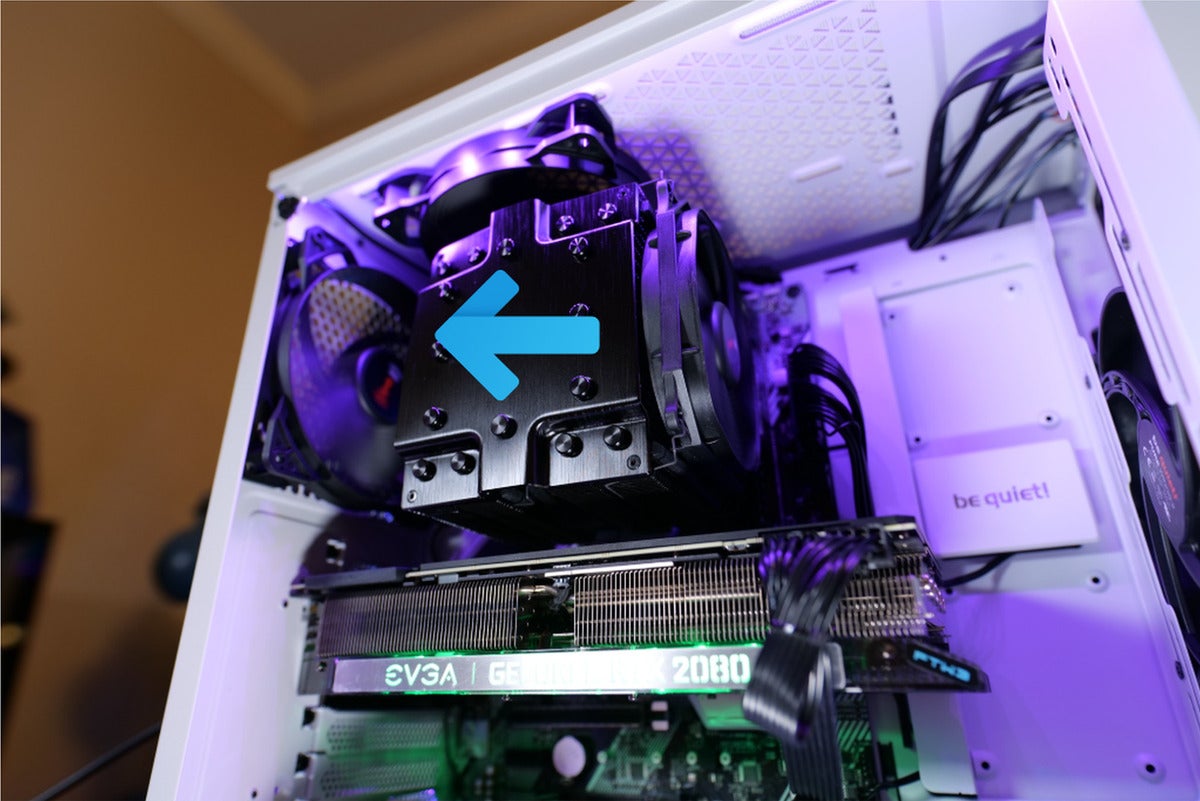 Thiago Trevisan/IDG
Thiago Trevisan/IDG With a traditional tower air cooler, you'd optimally wish the winnow located connected the cooler's heatsink pushing air towards the as exhaust of the caseful. In the example above, the open shroud GPU will also exhaust hot air upwards—a characteristic setup for a gaming rig. This testament slightly increase your CPU temperatures when using an air tank; you can reduce the heat levels with optimal fan air flow.
How about your GPU?
Received open shroud GPUs exhaust very much of empty words into your pillow slip—even more than your CPU if IT's a powerful graphics card. What nates you do to maximize cooling and airflow?
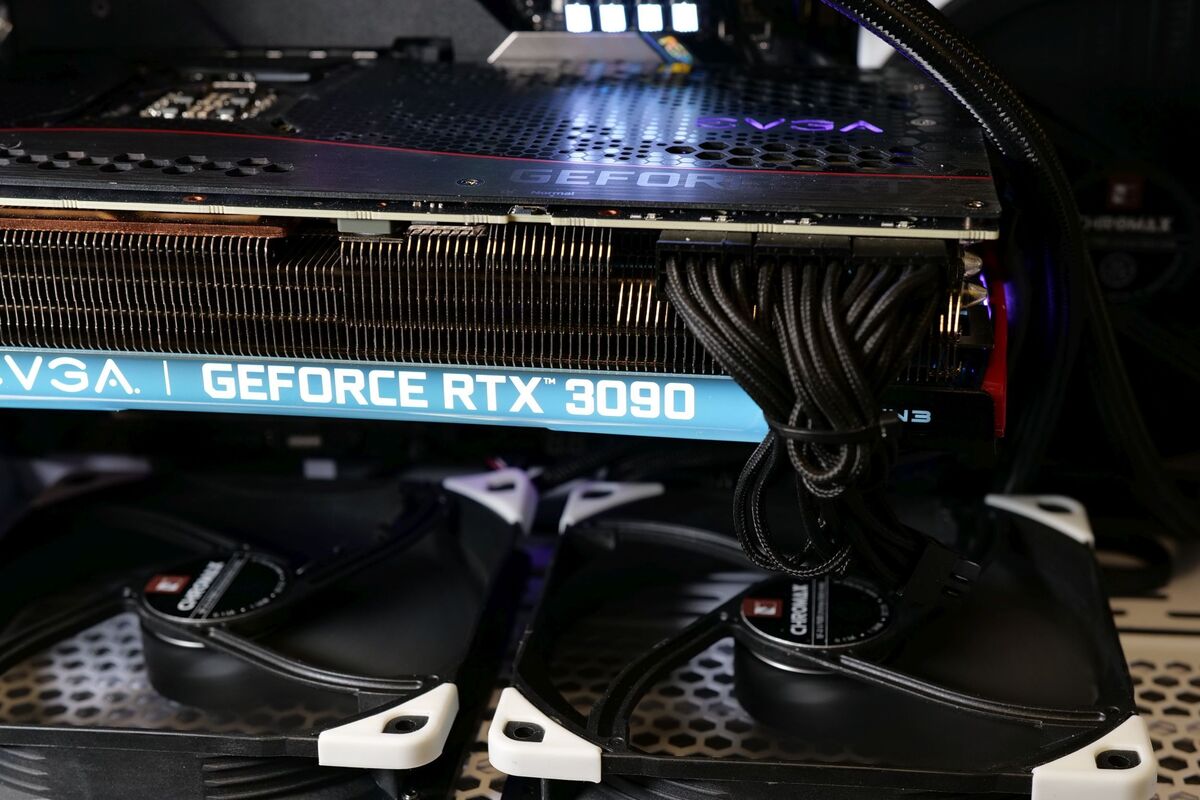 Thiago Trevisan/IDG
Thiago Trevisan/IDG If your casing allows information technology, install fans pushing transmit upwards towards your GPU along the bottom. This will give cool air immediately to the intake fans along the GPU itself. If your case doesn't allow that configuration, have a front intake winnow coupled with proper lead surgery rear exhaust fans, as described previously. Again: You forever want at least same intake and one exhaust fan in your system, and that goes double if it's a gaming rig.
Fan curves and case choice
In that location are cardinal final monumental items to consider. First, suit prize can aid tremendously in optimal winnow air flow. Our explainer on purchasing the uncorrupted Microcomputer case can help, though you should be good if you follow these general guidelines:
- Utilisation a cause with a mesh front. These will have much better flow of air than cases with closed-off or glass first panels. Examples include the Fractal Design Meshify series, and the Atomic number 4 Silence Silent Stem 802 mentioned earlier.
- If you're using hot, powerful hardware, wee sure to get a case large enough to accommodate the essential fans. If you want to stick to a smaller lawsuit, conceive using liquid temperature reduction for more efficiency.
Second, utilize fan controllers to pinpoint the good noise to performance ratio that you give notice find. Most midrange to high-end motherboards include fan software either in their BIOS or as a Windows application. Example of this is the Asus Artificial insemination Suite 3. You ass set your CPU and character temperatures based on actual thermals, which can give you relaxing carrying into action. Likewise, the fans give notice storm ascending when needed to induce sure everthing stays cool.
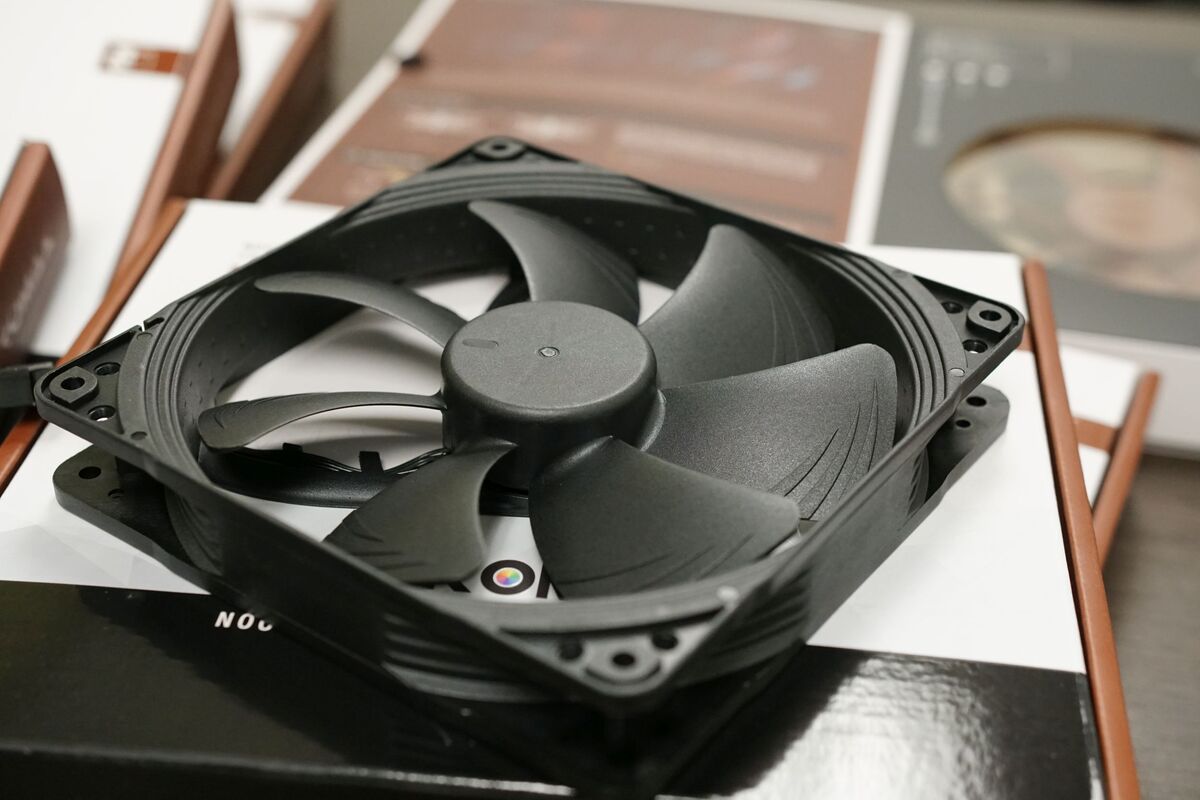 Thiago Trevisan/IDG
Thiago Trevisan/IDG If you want more advanced check of your fan curves, computer hardware controllers from Aquacomputer, Corsair, and EKWB also exist that allow you to smooth tune fan curves eve far. You can also groundwork the fan speeds on the GPU or use thermic sensors with these more precocious units, but they'ray overkill for most people.
And there you deliver it: You right away know everything needed to optimally position your fans for the best cooling performance. Our guides to checking your CPU temperature and your graphics card's GPU temperature can help you confirm everything is running smoothly. May your temperatures be low!
Note: When you purchase something after clicking links in our articles, we May earn a small commission. Study our assort link policy for more inside information.
Source: https://www.pcworld.com/article/394965/how-to-set-up-your-pcs-fans-for-maximum-system-cooling.html
Posted by: grimmwomighon.blogspot.com


0 Response to "How to set up your PC’s fans for maximum system cooling - grimmwomighon"
Post a Comment